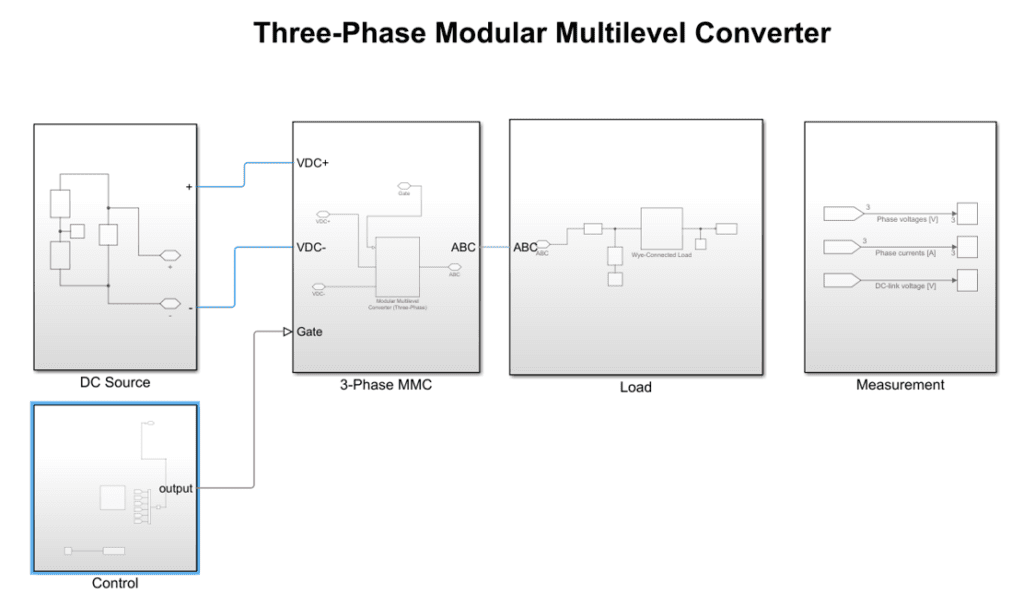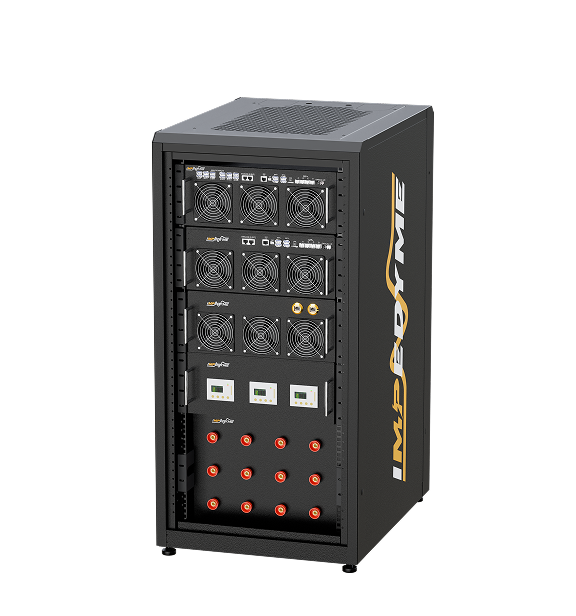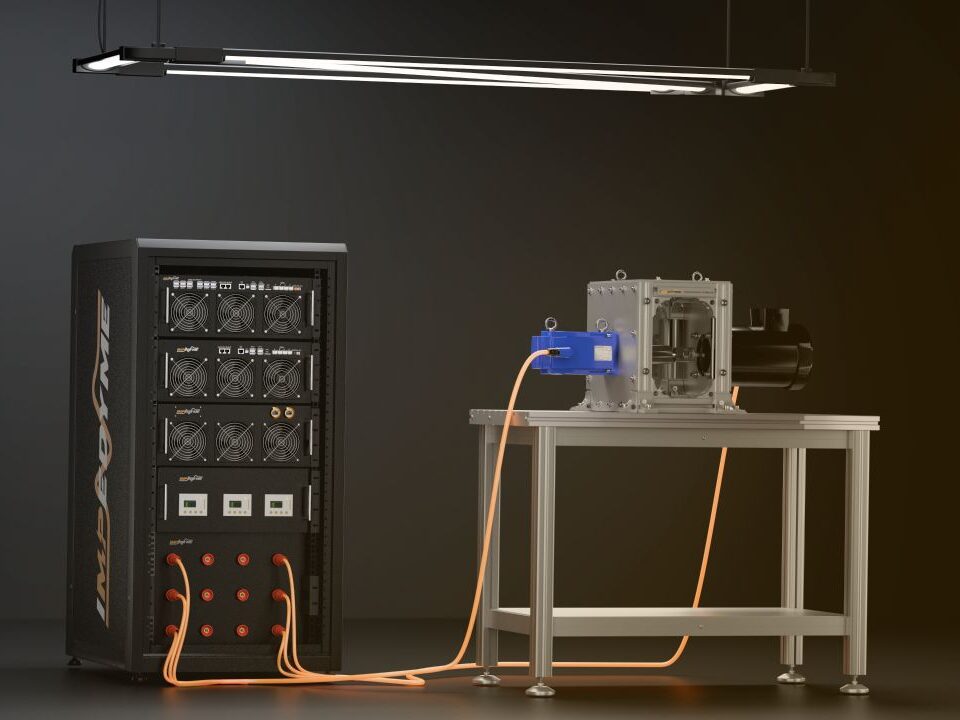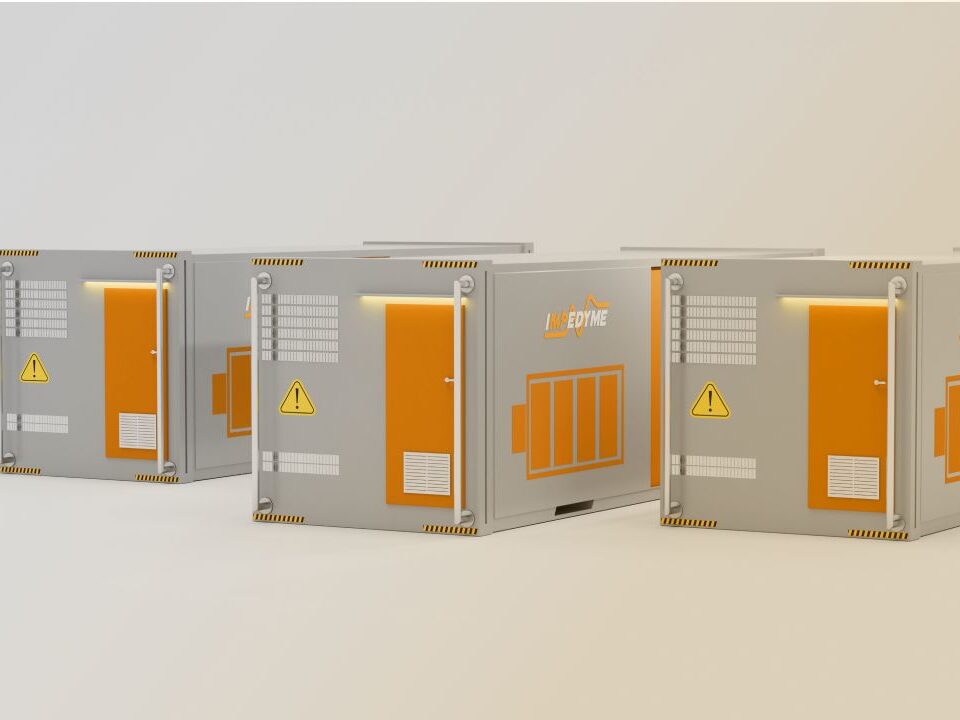
-
 Induction Motor
Induction Motor
-
 Automotive Electrical System Simulation
Automotive Electrical System Simulation
-
 DC/DC Bidirectional Converter
DC/DC Bidirectional Converter
-
 PWM Control for Brushless DC
PWM Control for Brushless DC
-
 BLDC Motor Control and Drive Simulation
BLDC Motor Control and Drive Simulation
-
 Electric Vehicle Fast Charger Simulation
Electric Vehicle Fast Charger Simulation
-
 DFIG Wind Turbine Simulation
DFIG Wind Turbine Simulation
-
 Dual Active Bridge
Dual Active Bridge
-
 EV Dynamometer Test Environment Simulation
EV Dynamometer Test Environment Simulation
-
 Electric Vehicle Simulation
Electric Vehicle Simulation
-
 Three-Phase Grid-Connected Inverter Using Direct-Q…
Three-Phase Grid-Connected Inverter Using Direct-Q…
-
 Three-Phase Grid-Connected Solar Photovoltaic
Three-Phase Grid-Connected Solar Photovoltaic
-
 Grid-Connected Rectifier
Grid-Connected Rectifier
-
 Grid-Tied Inverter System
Grid-Tied Inverter System
-
 Torque Control in a Hybrid Excitation Synchronous …
Torque Control in a Hybrid Excitation Synchronous …
-
 Wye-Delta Starting Circuit
Wye-Delta Starting Circuit
-
 IPMSM-Based Axle-Drive
IPMSM-Based Axle-Drive
-
 Simplified Parallel Hybrid Electric Vehicle
Simplified Parallel Hybrid Electric Vehicle
-
 Simplified Series Hybrid Electric Vehicle
Simplified Series Hybrid Electric Vehicle
-
 Series-Parallel Hybrid Electric Vehicle
Series-Parallel Hybrid Electric Vehicle
-
 Three-Phase Matrix Converter Simulation
Three-Phase Matrix Converter Simulation
-
 Venturini Modulation for Three-Phase Matrix Conver…
Venturini Modulation for Three-Phase Matrix Conver…
-
 Microgrid Frequency Regulation Using Vehicle-to-Gr…
Microgrid Frequency Regulation Using Vehicle-to-Gr…
-
 Three-Phase Modular Multilevel Converter
Three-Phase Modular Multilevel Converter
-
 Field-Oriented Control
Field-Oriented Control
-
 Interior Permanent Magnet Synchronous Generator
Interior Permanent Magnet Synchronous Generator
-
 Permanent Magnet Synchronous Machine
Permanent Magnet Synchronous Machine
-
 PMSM Rotor Angular Velocity
PMSM Rotor Angular Velocity
-
 PMSM-Based Electrical Traction Drive
PMSM-Based Electrical Traction Drive
-
 Maximum Power Point Tracking
Maximum Power Point Tracking
-
 Six-Phase Permanent Magnet Synchronous Machine
Six-Phase Permanent Magnet Synchronous Machine
-
 Synchronous Machine-Based Electrical Drive Simulat…
Synchronous Machine-Based Electrical Drive Simulat…
-
 Single-Stage Solar Inverter
Single-Stage Solar Inverter
-
 Three-Phase Cycloconverter Simulation
Three-Phase Cycloconverter Simulation
-
 Totem-Pole PFC Simulation
Totem-Pole PFC Simulation
-
 Twelve-Pulse Thyristor Rectifier
Twelve-Pulse Thyristor Rectifier
-
 Two-Wheeler On-Board Charger
Two-Wheeler On-Board Charger
-
 Vienna Rectifier Simulation
Vienna Rectifier Simulation
-
 High-Voltage Direct Current
High-Voltage Direct Current
-
 Wireless Power Transfer
Wireless Power Transfer

Comprehensive Documentation for Three-Phase Modular Multilevel Converter (MMC) Simulation
Table of Contents
- 1 Comprehensive Documentation for Three-Phase Modular Multilevel Converter (MMC) Simulation
- 1.1 Introduction
- 1.2 System Overview
- 1.2.1 What is a Modular Multilevel Converter (MMC)?
- 1.2.2 Purpose of the Simulation
- 1.3 Key Features
- 1.3.1 Scalable Multi-Level Voltage Generation
- 1.3.2 Low Harmonic Distortion
- 1.3.3 Fault-Tolerant Operation
- 1.3.4 Bidirectional Power Flow
- 1.4 Simulation Objectives
- 1.5 Technical Description
- 1.5.1 System Configuration
- 1.5.2 Control Methodology
- 1.6 Advantages of MMC Simulation
- 1.7 Applications
- 1.8 Simulation Benefits
- 1.9 Summary
- 1.10 Future Enhancements
- 1.10.1 Induction Motor
- 1.10.2 Automotive Electrical System Simulation
- 1.10.3 DC/DC Bidirectional Converter
- 1.10.4 PWM Control for Brushless DC
Introduction
The Three-Phase Modular Multilevel Converter (MMC) Simulation is a detailed model designed to demonstrate an advanced multi-level AC-DC and DC-AC power conversion technique. MMCs are widely used in high-voltage DC (HVDC) transmission, renewable energy integration, and industrial motor drives due to their scalability, reduced harmonic distortion, and high efficiency. This simulation is crucial for studying MMC control strategies, voltage balancing, and fault-tolerant operations in real-world applications.

System Overview
What is a Modular Multilevel Converter (MMC)?
An MMC is a multi-level power converter topology consisting of multiple submodules per phase, allowing for:
- High voltage operation with modular scalability.
- Reduced harmonic content and improved power quality.
- Enhanced redundancy and fault tolerance for increased reliability.
Purpose of the Simulation
The simulation aims to:
- Demonstrate the working principles of a three-phase MMC.
- Validate voltage balancing and capacitor charge control.
- Analyze efficiency, harmonic performance, and dynamic response.
Key Features
Scalable Multi-Level Voltage Generation
The MMC topology enables high-voltage operation with multiple submodules per phase, reducing the need for bulky transformers. ➡️ HIL/PHIL Benefit: Real-time simulation validates submodule balancing and system performance under varying grid conditions.
Low Harmonic Distortion
By using a multi-level voltage waveform, MMCs achieve lower THD compared to traditional two-level and three-level converters. ➡️ HIL/PHIL Benefit: Harmonic analysis and compliance testing ensure the converter meets grid code requirements.
Fault-Tolerant Operation
MMC’s modular structure allows for redundant operation, improving system reliability in case of submodule failures. ➡️ HIL/PHIL Benefit: Real-time fault injection and testing enhance converter robustness under fault scenarios.
Bidirectional Power Flow
Enables energy regeneration and grid support.
Simulation Objectives
This simulation helps evaluate:
- Performance of different modulation strategies (Phase-Shifted PWM, Nearest Level Control).
- Voltage and current balancing across submodules.
- Efficiency analysis under various load and grid conditions.
- Dynamic response to grid disturbances and faults. ➡️ HIL/PHIL Benefit: These evaluations transition smoothly from simulation to real hardware testing, ensuring practical implementation feasibility.
Technical Description
System Configuration
- Input: Three-phase AC or DC supply (depending on AC-DC or DC-AC operation).
- Output: Regulated three-phase AC or DC voltage for HVDC, motor drives, or grid applications.
- Power Stage: Multiple submodules per phase (half-bridge or full-bridge cells with capacitors and switching devices).
Control Methodology
- Modulation Techniques: Nearest Level Control (NLC), Phase-Shifted PWM, or Model Predictive Control.
- Voltage Balancing: Ensuring equal capacitor voltages across all submodules.
- Fault Management: Detection and mitigation of submodule failures. ➡️ HIL/PHIL Benefit: Control logic validation and fine-tuning of parameters using real-time HIL testing before hardware deployment.
Advantages of MMC Simulation
- Higher Efficiency: Reduced switching losses and improved waveform quality.
- Scalability: Modular structure enables expansion for higher voltage applications.
- Improved Power Quality: Lower THD and better waveform synthesis. ➡️ HIL/PHIL Benefit: Each feature can be tested across the full development cycle (RCP → HIL → PHIL) using Impedyme’s platforms.
Applications
- HVDC Transmission: High-voltage AC-DC and DC-AC conversion.
- Flexible AC Transmission Systems (FACTS): Static Synchronous Compensator (STATCOM): MMCs are used in STATCOMs to provide reactive power compensation, improving voltage stability and power quality in transmission networks.
Unified Power Flow Controller (UPFC): MMCs enable precise control of power flow in transmission lines, enhancing grid stability and efficiency.
- Electric Traction Systems: Railway Electrification: MMCs are used in electric trains and trams for efficient AC-to-DC and DC-to-AC power conversion, enabling regenerative breaking and reducing energy consumption.
High-Speed Trains: MMCs provide high power density and reliability, making them suitable for high-speed rail systems.
- Marine and Offshore Applications: Shipboard Power Systems: MMCs are used in electric propulsion systems for ships, providing efficient power conversion and reducing fuel consumption.
Offshore Oil and Gas Platforms: MMCs are employed in power distribution systems on offshore platforms, ensuring reliable and efficient operation in harsh environments.
- Renewable Energy Integration: Grid connection for offshore wind farms and solar power plants.
- Industrial Motor Drives: High-power adjustable-speed drives for heavy industries. ➡️ HIL/PHIL Benefit: Real-time emulation and testing accelerate the development of tailored solutions for each application.
Simulation Benefits
With this simulation, users can:
- Explore MMC dynamics and control strategies in detail.
- Optimize modulation techniques for improved performance.
- Assess power quality and fault-tolerant capabilities. ➡️ HIL/PHIL Benefit: These insights directly translate to hardware using Impedyme’s PHIL, ensuring real device compliance with design specifications.
Summary
The Three-Phase Modular Multilevel Converter (MMC) Simulation demonstrates a cutting-edge power conversion approach with modular scalability and improved efficiency. By integrating Impedyme’s HIL and PHIL solutions, the entire development workflow is streamlined:
| Development Stage | Impedyme’s Contribution |
|---|---|
| Control Design | RCP using HIL for rapid algorithm validation |
| Control Hardware Testing | CIL with real-time MMC models |
| Power Stage Verification | PHIL with real voltage and power interaction |
| Final Validation | Full-system PHIL under realistic grid and load conditions |
Future Enhancements
- Integration of advanced predictive control techniques.
- Real-time fault detection and self-healing mechanisms.
- Compliance testing with evolving grid code regulations.
- Enhanced energy storage integration for renewable applications.
The combination of a Three-Phase Modular Multilevel Converter (MMC) Simulation with Impedyme’s HIL/PHIL platforms ensures a seamless development workflow—from concept validation to real-world implementation. This approach enables faster deployment, reduced design risks, and improved reliability for next-generation power conversion systems.






